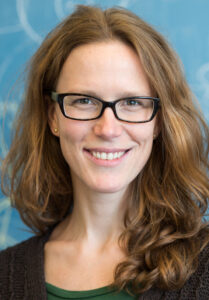
The American Institute of Mathematics has announced the third annual Alexanderson Award, which recognizes outstanding research articles arising from AIM research activities that have been published within the past three years. The award is given in honor of Gerald (“Jerry”) Alexanderson, Professor of Mathematics at Santa Clara University and founding chair of AIM’s Board of Trustees, who died on December 16, 2020. His influence was instrumental in AIM’s history and development, and he contributed greatly to mathematics more broadly. To appreciate these contributions, see the obituary from MAA Focus.
Receiving the 2020 award are Laura DeMarco, Holly Krieger, and Hexi Ye for their paper “Uniform Manin-Mumford for a family of genus 2 curves,” published this year in the Annals of Mathematics. The paper grew out of the AIM SQuaRE, Dynamical Andre-Oort Questions.



In this paper, they study the geometry of surfaces and how each sits inside a 4-dimensional torus, called its Jacobian. There is a large set of special points in this Jacobian, its “torsion” points; but in the early 1980s, Raynaud proved that the surface will intersect only finitely many of these points. This finiteness statement was called the Manin-Mumford conjecture. Soon after, Mazur posed an important question about these surfaces, asking if we can bound the number of the special points on the surface only in terms of its genus (the topology of the surface), or if there is additional geometric information we need to know to control the size of this intersection.
Although not obviously related to number theory, much progress on questions of this sort has been made over the years with tools from algebra and arithmetic geometry. But Mazur’s question about a uniform bound remained elusive.
In this paper, DeMarco, Krieger, and Ye also employ arithmetic tools, but their novel insight was to use ideas from dynamical systems to finally provide a uniform bound on the number of torsion points in a special setting. They study a family of surfaces in genus 2 that map to pairs of elliptic curves (surfaces of genus 1), and they give a positive answer to Mazur’s question for this family. The proofs employ a quantitative version of arithmetic equidistribution to relate the heights (i.e., the arithmetic complexity) of the surfaces to the number of torsion points.
Read the online version of the paper here.
Due to the pandemic the 2020 Alexanderson Award Ceremony and Lecture was postponed and took place on September 30, 2021, in the Recital Hall of Santa Clara University.


